Cobots vs Robots: The Ultimate Showdown
Welcome to the ultimate showdown between cobots and robots. For decades, conventional industrial robots have ruled the manufacturing space. More recently, collaborative robots stepped into the ring as a worthy challenger. They might look similar to some conventional industrial robots, but they are lighter and easier to use, and manufacturers have started adopting cobots at an impressive rate. So, which is better? Robots or cobots? Robotiq's Alex Hill referees the contest.
It's time to put the two robot types against each once and for all.
Here's a head-to-head...sorry...arm-to arm showdown between cobots and conventional robots.
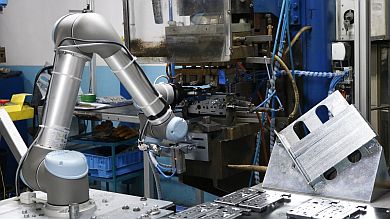
Let's meet our contestants!
Contestant 1: Conventional Industrial Robots
In the first corner, we have the conventional industrial robot, a machine built for speed and strength.
Industrial robots have been used for almost 70 years in automated manufacturing processes. They are typically used for high-volume, repetitive tasks such as welding, painting, and large assembly. They have the advantage of being able to work quickly and efficiently, once they have been deployed to their chosen task.
This is not the first showdown for industrial robots. For decades, robots have been pitted against humans for their increased speed, accuracy, and consistency. In many cases, industrial robots came out on top -- and human workers aren't always happy about it.
Conventional industrial robots are often big and strong, requiring safety fencing to avoid danger to humans. A formidable opponent.
Contestant 2: Collaborative Robots
In the opposite corner, we have the relative newcomer to the automation space: collaborative robots.
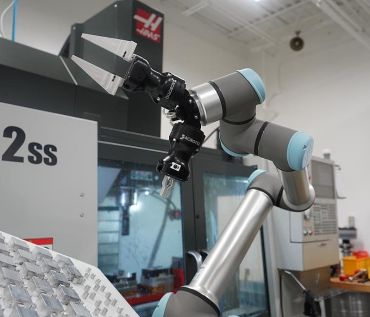
Cobots are designed to work alongside humans, providing an extra hand on the production line or for other tasks. They're often smaller and lighter than conventional industrial robots, requiring less investment of time, budget, and energy to get running.
This is not the first time cobots have faced off against their robot cousins. In recent decades, they've also been pitted against humans for their safety and task consistency. And, often, humans seem happier with this pairing than with conventional robots.
Let the Showdown Begin!
Both robots and cobots have their strengths and weaknesses.
Conventional robots can be incredibly powerful and efficient machines, capable of executing the same complex production tasks repeatedly for months on end. But they do take a long time to deploy and are expensive.
Cobots, on the other hand, are lighter and more affordable than conventional robots. They're easier to program and can work safely alongside humans. But they tend to be slower and less strong.
Which will win in our showdown?
Let the contest begin!
Round 1: Strength
The first round is strength. When it comes to power, industrial robots tend to be the stronger of the two. Some can lift hundreds of kilograms with ease.
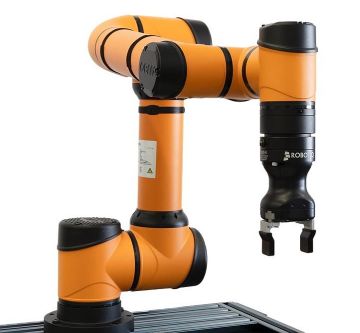
Cobots, on the other hand, have more modest lifting capabilities. Even with the heavier payload cobots on the market, such as the UR20 with its 20kg payload capacity, it's still not much.
Winner: Robots
Round 2: Speed
When it comes to speed, robots usually have the edge and are capable of moving at high speeds that no human could match -- but it's not a simple comparison.
Traditional industrial robots usually move much faster than cobots, allowing them to complete complex tasks quickly and efficiently. Cobots often move slowly, but only to keep them within safety limits to be around humans. They are often capable of moving at the same speed as robots.
Winner: Draw
Round 3: Flexibility
When it comes to flexibility and versatility, cobots come out on top. You can quickly and easily reprogram a cobot to perform a variety of tasks. Changing between robot programs and tasks can take just a matter of minutes.
With a conventional robot, reprogramming is usually a long and difficult process, requiring you to stop production while it happens.
Winner: Cobots
Round 4: Cost
The true cost of a robotic solution can be hard to clarify. With conventional industrial robots, there are various added extras you will have to pay for that aren't always obvious up front.
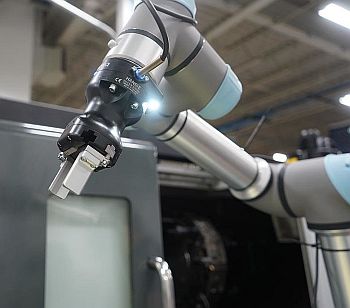
Cobots are usually more affordable. Also, their ease of use means you don't need to pay expensive integration costs to get them up and running.
Winner: Cobots
Round 5: Safety
This is the round where cobots have an "unfair advantage."
Traditional industrial robots need to be caged off or required dedicated safety systems to operate safely around humans.
Cobots are designed and built with human safety in mind. You can place the cobot into your facility without safety fencing and know that your human workers will be safe alongside it.
Winner: Cobots
Round 6: Efficiency
When it comes to efficiency, this is a hard contest to judge.
What does efficiency mean in terms of robotics? What types of efficiency are we talking about, anyway?
There are various types of efficiency. Conventional robots could be efficient in that they move and complete tasks quickly. But cobots could be efficient as they take less time to program.
Winner: Draw
Round 7: Weight
There's no denying it. Industrial robots are heavy beasts. An industrial robot can be 3 or 4 times heavier than a cobot with a similar payload capacity.
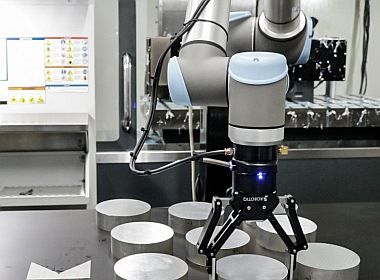
Heavier doesn't mean better. The higher weight of a conventional robot means you need a stronger support structure under it and makes it harder to move the robot around.
Winner: Cobots
Round 8: Accuracy
Conventional industrial robots tend to have the edge when it comes to accuracy, and for one reason -- stiffness. Their heavy structure does have one benefit -- it usually makes the robot stiffer. This can improve the accuracy of the robot.
Some cobots are as accurate as some conventional robots, but in general, robots are more accurate.
Winner: Robots
Round 9: Ease of Use
The final round is ease of use. And here, cobots clearly come out on top.
Conventional industrial robots require specialized programming and maintenance that can be time-consuming and difficult for those without robotics expertise.
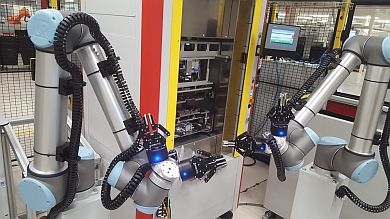
Cobots are designed to be much more user friendly. Their intuitive interfaces allow almost anyone to quickly learn how to program and maintain the cobot.
Winner: Cobots
And the winner is...
After a long and hard-fought battle, the winner is...cobots!
But there's a caveat.
As with any technology, the real answer to the question "Which is best for me?" is...it depends! In our showdown, cobots may have the edge in factors like cost, safety, and ease of use. But which type you need depends on your specific needs. It's up to you to decide which factors are important for you.
No matter whether you choose cobots or conventional robots, both offer powerful automation solutions that can significantly improve the efficiency and consistency of your tasks.
Want more information? Click below.
Rate this article
View our terms of use and privacy policy ::m::